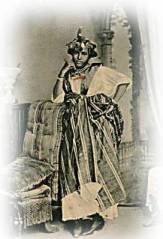The History of Barbados
Barbados, like its sister islands of the Caribbean is built upon an extinct mountain chain. Over many millions of years the surface lived on today was created by the life efforts of unimaginable numbers of a special sea snail, whose shell, left in death, is compacted and cemented together with those of its neighbors producing coral.
Barbados was discovered by Europeans through the travels of the Portuguese who gave it the name 'Barbados' meaning "bearded ones". This name allegedly arose from a local tree that sprouts a thick cascading canopy of vines which resembles the human beard, at maturity. The local name for this tree to this day is the 'bearded fig tree'. Some authorities, however, contend that the name Barbados may also have arisen from bearded giants who once dwelt here since the bearded fig trees are inland plants. Stories of ancient giants prevail in the early Americas and the Olmec heads in Mexico are a testimony to their existence.
Though the Portuguese discovered Barbados, it was the English who claimed the island in 1625 and settlement began in 1627 It was claimed that the island was uninhabited. Arawaks who originated from the mainland of South America however claimed that they had once lived on Barbados. They used a boat unique to them called a 'piragua' to reach Barbados - this boat essentially was a log with seating space carved out of it.
After some efforts with tobacco, indigo and cotton production, cane sugar cultivation was introduced in 1642. Sugar production and export to Europe became a tremendously profitable venture worldwide and it was during this period that Barbados suddenly rose to prominence. Its small land-mass, which is essentially flat, and the year round sunny weather made it an ideal estate for the sugar plantation era.
However, sugar production proved to be manpower intensive and both the Europeans and Native Americans fared poorly at work in the hot climate. To solve this labour problem, the estate owners of the island imported Africans, who being accustomed to an equatorial climate over many generations, were unequaled in productivity.
Many decades later the evils of the slave trade and forced labour in the Caribbean were ended by efforts of Europeans in Europe with finer humanitarian feelings and absent vested interests in the profits of sugar production, (the discovery that sugar could be attained from the sugar beet in Europe further stymied arguments of the 'necessity' of slavery).
Today inhabitants of the island seek reconciliation regarding their past led by successive stable governments. The island has been independent since 1966.
The animation below speaks to the island's importance to genealogical and historical research and its past strategic naval importance, but in actual fact this island is twenty-one miles long and fourteen miles wide located at latitude 13 degrees in the eastern Caribbean.


Contents